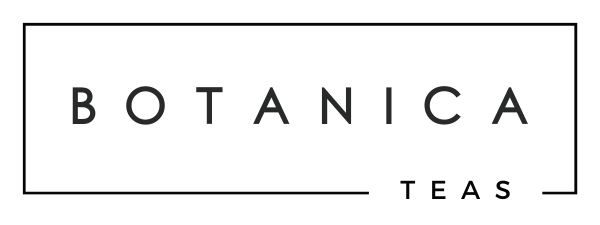

what is herbalism?

Herbalism is an ancient practice that has been used for centuries to support health and well-being through the power of plants.
Herbs have played an essential role in cultures around the world as natural remedies, culinary enhancements, and sources of nourishment.
We believe herbalism is a way to reconnect with nature and its healing powers by supporting the mind, body, and soul.
-

HERBAL DICTIONARY
LEARN MORE -

HERBAL TERMS
LEARN MORE -

HERBAL PREPARATIONS
LEARN MORE
Herbs to know
-
Astragalus
Immune system support, adaptogenic properties, may enhance energy and stamina.
-
Astragalus membranaceus
Parts used: roots
-
Burdock
Detoxifies the liver, supports skin & gut health, nourishing.
-
Arctium lappa
Parts used: roots
-
Chamomile
Calms the nervous system, supports digestion, promotes restful sleep.
-
Matricaria chamomilla
Parts used: flowers
-
Dandelion
Supports digestion and liver health, promotes detoxification, mild diuretic.
-
Taraxacum officinale
Parts used: roots, leaves, flowers
-
Echinacea
Boosts the immune system, may reduce the duration of colds and infections.
-
Echinacea purpurea / Echinacea angustifolia
Parts used: roots, leaves, flowers
-
Eleuthero
Adaptogen that combats stress, boosts energy, supports endurance, supports immune system. Also called siberian ginseng.
-
Eleutherococcus senticosus
Parts used: roots
-
Ginger
Eases nausea, aids digestion, anti-inflammatory, supports circulation.
-
Zingiber officinale
Parts used: rhizome/roots
-
Gotu Kola
Supports cognitive function, enhances skin healing, reduces anxiety.
-
Centella asiatica
Parts used: leaves, aerial parts
-
Holy Basil
Reduces stress, supports respiratory health, balances blood sugar levels.
-
Ocimum sanctum / Ocimum tenuiflorum
Parts used: leaves, flowers
-
Lemon Balm
Calms the nervous system, supports digestion, may ease mild anxiety and insomnia.
-
Melissa officinalis
Parts used: leaves
-
Nettle
Rich in vitamins and minerals, supports kidney health, may reduce inflammation.
-
Urtica dioica
Parts used: leaves, roots
-
Turmeric
Potent anti-inflammatory, supports joint health, promotes liver function.
-
Curcuma longa
Parts used: rhizome/roots
Collapsible content
References
- Winston, D., & Maimes, S. (2007). Adaptogens: Herbs for Strength, Stamina, and Stress Relief. Healing Arts Press.
- NIH National Center for Complementary and Integrative Health (NCCIH): Astragalus Profile.
- Bone, K., & Mills, S. (2013). Principles and Practice of Phytotherapy. Elsevier.
- Kloos, H. (2020). Medicinal Plants of the World. CRC Press.
- Brinker, F. (2010). Herbal Contraindications and Drug Interactions Plus Herbal Adjuncts with Medicines. Eclectic Medical Publications.
- Grieve, M. (1931). A Modern Herbal.
- McKay, D. L., & Blumberg, J. B. (2006). A Review of the Bioactivity and Potential Health Benefits of Chamomile Tea (Phytotherapy Research).
- Percival, S. S. (2000). Use of Echinacea in Medicine (Biochemical Pharmacology).
- Foster, S., & Duke, J. A. (2000). A Field Guide to Medicinal Plants and Herbs of Eastern and Central North America.
- Panossian, A., & Wagner, H. (2005). Adaptogens: Tonic Herbs for Fatigue and Stress (Phytomedicine).
- Zadeh, J. B., & Kor, N. M. (2014). Physiological and Pharmaceutical Effects of Ginger (IOSR Journal of Pharmacy and Biological Sciences).
- James, J. T., & Dubery, I. A. (2009). Pentacyclic Triterpenoids from the Medicinal Herb Centella asiatica (Molecules).
- Winston, D., & Kuhn, M. A. (2008). Herbal Therapy and Supplements.
- Cohen, M. M. (2014). Tulsi - Ocimum sanctum: A Herb for All Reasons (Journal of Ayurveda and Integrative Medicine).
- Puri, H. S. (2002). Rasayana: Ayurvedic Herbs for Longevity and Rejuvenation. CRC Press.
- Kennedy, D. O., & Scholey, A. B. (2006). The Psychopharmacology of European Herbs (Current Pharmaceutical Design).
- Yarnell, E., & Abascal, K. (2009). Botanical Medicines for the Urinary Tract (World Journal of Urology).
- Hoffmann, D. (2003). Medical Herbalism: The Science and Practice of Herbal Medicine. Healing Arts Press.
- Aggarwal, B. B., & Harikumar, K. B. (2009). Potential Therapeutic Effects of Curcumin (The International Journal of Biochemistry & Cell Biology).
- Jurenka, J. S. (2009). Anti-inflammatory Properties of Curcumin, a Major Constituent of Curcuma longa: A Review (Alternative Medicine Review).
Herbal Terminology
-
Adaptogen
Herbs that help the body adapt to stress and restore balance. They support overall resilience and energy.
Examples: Ashwagandha, Eleuthero.
-
Alterative
Herbs that support the body’s natural detoxification processes by improving the function of the liver, kidneys, and lymphatic system.
Examples: Burdock, Red Clover.
-
Astringent
Herbs that contract and tighten tissues, reducing secretions and inflammation.
Examples: Witch Hazel, Raspberry Leaf
-
Carminative
Herbs that relieve gas, bloating, and digestive discomfort by relaxing the intestinal muscles. Examples: Ginger, Peppermint.
-
Demulcent
Herbs that soothe and protect irritated or inflamed tissues by forming a protective film.
Examples: Marshmallow Root, Licorice.
-
Diuretic
Herbs that increase urine production, promoting the elimination of excess fluid and supporting kidney function.
Examples: Dandelion, Nettle.
-
Nervine
Herbs that support the nervous system, helping to calm, soothe, or promote relaxation.
Examples: Lemon Balm, Chamomile.
-
Tonic
Herbs that promote general health and well-being by supporting the function of specific organs or systems over time.
Examples: Nettle, Dandelion.
Most Common Herbal Preparations
-
Infusion
InstructionsA method of extracting the medicinal properties of delicate plant parts like leaves and flowers by steeping them in hot water, similar to making tea.
-
Decoction
InstructionsUsed for tougher plant materials like roots, bark, and seeds, this method involves simmering the herbs in water for an extended time to extract their active compounds.
-
Tincture
A concentrated herbal extract made by soaking plant material in alcohol or a combination of alcohol and water for several weeks. Glycerin or vinegar can be used as alcohol-free alternatives.



